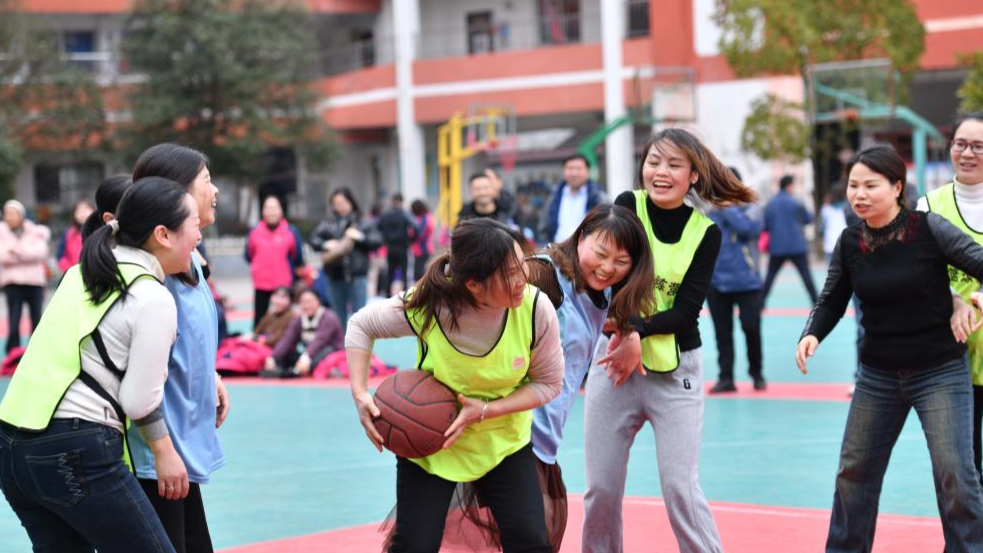
BEIJING - A white paper released Friday by the State Council Information Office expounded on the development of China's endeavors concerning women.
The Communist Party of China (CPC) leads Chinese women in exercising their lawful democratic rights, participating in social and economic development, and sharing the fruits of reform and development, all on the foundation of gender equality, according to the white paper, titled "China's Achievements in Women's Well-Rounded Development in the New Era."
The CPC's leadership is the fundamental guarantee of China's work related to women, it said.
The white paper said highlighting gender equality as a basic national policy is an innovative practice of the Chinese socialist system and a momentous decision for advancing this cause and women's well-rounded development.
ALSO READ: Women find gift of gab in takeover of crosstalk
Development cannot be achieved without women, and its fruits should be shared by all, the white paper said, adding that in this spirit, China has integrated the advancement of gender equality into its broader development process.
Upholding a people-centered philosophy of development, China respects the agency of women and has strengthened relevant institutional safeguards, policy support, and public service supply for their development, the white paper said.
Together with all other countries, China works to shape a global environment conducive to women's development, to safeguard international fairness and justice, and to make its due contribution to moving the world to a bright future of peace, security, prosperity and progress, it added.
Benefits from poverty alleviation
The white paper also highlighted Chinese women's extensive benefits from the country's epic campaign of poverty alleviation.
Women, who comprise approximately half of the impoverished population in China, have benefited from targeted resource allocation in efforts including project arrangement, capital utilization, and the introduction of household-specific measures, according to the white paper.
The white paper underscored China's efforts to ensure that impoverished women have access to basic medical and health services, compulsory education, government subsidies, basic food and clothing, and safe housing.
A dynamic monitoring and assistance mechanism has been established to prevent any relapse into or occurrence of poverty, and support remains in place for women lifted out of poverty and those in low-income areas to participate in the local economy, seek more employment opportunities, and increase incomes, according to the white paper.
China has leveraged new forms of business and industries such as e-commerce programs, photovoltaic technology, and tourism to help impoverished women find good jobs within their local communities. In ethnic minority areas, the transition of the hand-knitting business from a purely traditional craft to a driver of the local economy has transformed the lives of the women embroidery artisans in the Miao and Yi communities.
China has also increased fiscal and financial support to women in poverty. Cumulatively, over 450 billion yuan (about $63.27 billion) in guaranteed microloans and poverty alleviation microcredit were disbursed to women in need, and 8.7 million impoverished women saw their income increased through entrepreneurship, the white paper noted.
As of 2020, training programs had been organized for a total of 10.21 million impoverished women and female technicians. From 2023 to 2024, the Rain and Dew Program sponsored 632,000 women to receive vocational education, allowing them to continue their march out of poverty, said the white paper.
Furthermore, China has advanced infrastructure development, fundamentally solving many of the issues impeding women's development in impoverished areas, such as insufficient access to transport, electricity, water and communications, it added.
Women's education level
China has made tremendous efforts to ensure women's equitable access to education of all categories and levels and women's right to education has been effectively guaranteed, the white paper added.
Gender divide in basic education has been largely eliminated, according to the white paper.
In 2024, girls accounted for 47.3 percent of children in kindergartens, and girls made up 46.98 percent of students of nine-year compulsory education, said the white paper, stressing that the net elementary education enrollment rate of school-age girls stays above 99.9 percent.
The white paper highlighted that a rough balance between male and female students in higher education has been achieved.
In 2024, female students in higher education institutions made up 50.76 percent of the total, 14.15 percentage points higher than in 1995. Among them, female graduate students accounted for 50.01 percent, an increase of 22.43 percentage points from 1995.
In 2020, the average length of schooling for female citizens at and above the age of 15 reached 9.59 years, according to the white paper.


